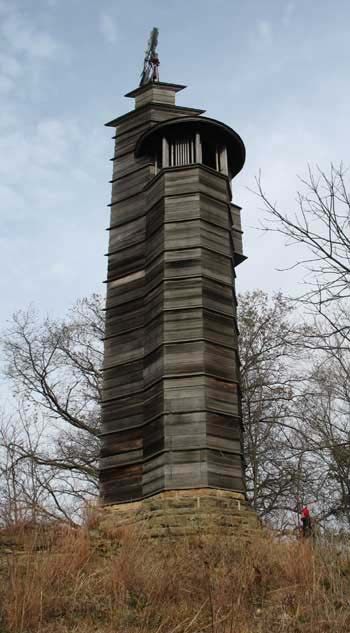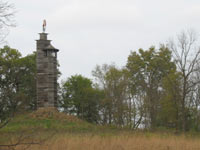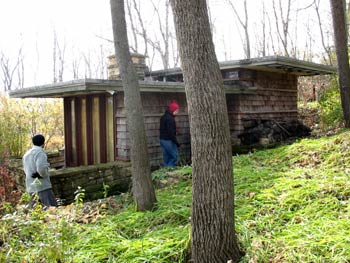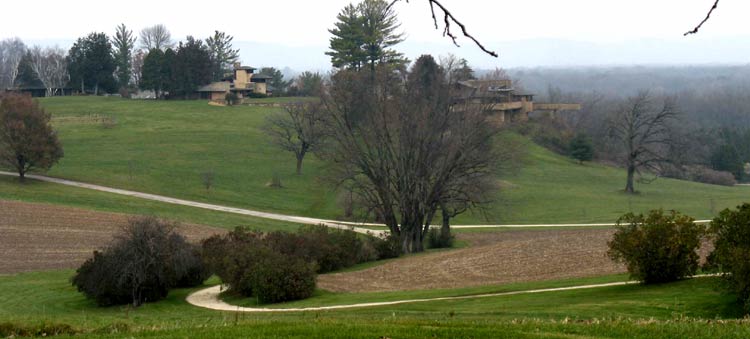(above) Panorama of the rolling Taliesin landscape, with Romeo and Juliet on the knoll to the left, and Midway just hidden behind the rock outcropping to the right. Few people realize that Wright designed landscapes with as much fluency and ferver as his buildings, Today, restoration of his landscape architecture is an important ongoing effort. |
|||
 |
At age 19 (in 1886) the romantic young Wright convinced his aunts to let him design them a windmill tower instead of using a metal "store-bought" tower. It would cost more, he acknowledged, but would stand at least twice as long -- he promised 25 years, The result was the famous Romeo and Juliet tower: a shorter octagonal tower with a balcony (Juliet), nestled against and supporting a tall, thin 'prow' element to hold the windwheel (Romeo) which was oriented to deflect the prevailing winds. They needed to be together -- neither element could stand long without the other. Wright's curmudgeonly uncles who farmed nearby scoffed at such foolishness and waste. It's reported that for years after any big storm, the first thing they'd do is look out over the hills to their nephew's tower, prepared to exult that it had blown down. Eventually they died, with the tower still standing. The iconic structure was recently re-built; the original had stood 90 years.
|
||
The "Engineer's Cottage", one of the nicer small buildings on the grounds. Tiny, sweetly designed, set unassumigly on a gentle slope amidst trees. |
Wright dammed the creek running through the estate to make a pond and waterfall next to a bridge -- and then composed an arcing landscaped entry drive up to the Home. |
||
In Wright's time, all the surrounding countryside that was visible from the home was managed aesthetically. The ploughing and planting patterns of every field, the layout of the vegetable gardens, the placement of stone walls, fences, trees and paths, the color of nearby buildings, even the color of the livestock, were all under his design control. |
|||





 Comments? lou@designcoalition.org
Comments? lou@designcoalition.org